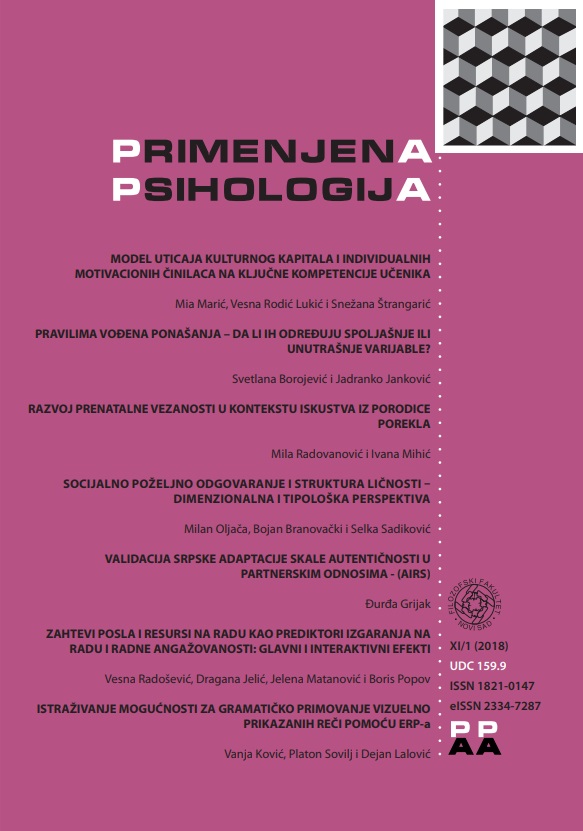SOCIJALNO POŽELJNO ODGOVARANJE I STRUKTURA LIČNOSTI – DIMENZIONALNA I TIPOLOŠKA PERSPEKTIVA
SOCIAL DESIRABILITY BIAS AND PERSONALITY STRUCTURE - DIMENSIONAL AND TYPOLOGICAL PERSPECTIVES
Author(s): Milan Oljača, Bojan Branovački, Selka SadikovićSubject(s): Social psychology and group interaction, Personality Psychology
Published by: Филозофски факултет, Универзитет у Новом Саду
Keywords: social desirability bias; dimensional perspective; typological perspective; VP+2; Unlikely virtues
Summary/Abstract: Main goal of this research is examination of social desirability bias (SDB), and its relation to dimensions and types of personality. Study was carried out on 1322 (76% female) participants, aged from 18 to 72 years (M = 33.63). IPIP simulation of Unlikely virtues (Uv) scale, questionnaire operationalisation of social desirability bias, and short version of VP + 2, questionnaire operationalisation of seven lexical dimensions in Serbian language, were administered. Latent class analysis was conducted in shared latent space of dimensions of VP + 2 and Uv. Bayesian information criterion indicates that the optimal solution consists of three personality types: Unadapted, Resilient and Constrained. Results are in accordance with assumptions about relations between social desirability bias and personality types. Resilient type scores moderately high on SDB, constrained type scores average, whilst unadapted type achieves moderately lowered scores on SDB. In order to examine relations between SDB and personality dimensions, gender, age and education status, analysis of covariance was applied. Results of this research confirm findings from previous research about relations between SDB and Five factor model personality dimensions, but also indicated the importance of the evaluative dimensions in understanding SDB.
Journal: Primenjena psihologija
- Issue Year: 11/2018
- Issue No: 1
- Page Range: 69-87
- Page Count: 19
- Language: Serbian

